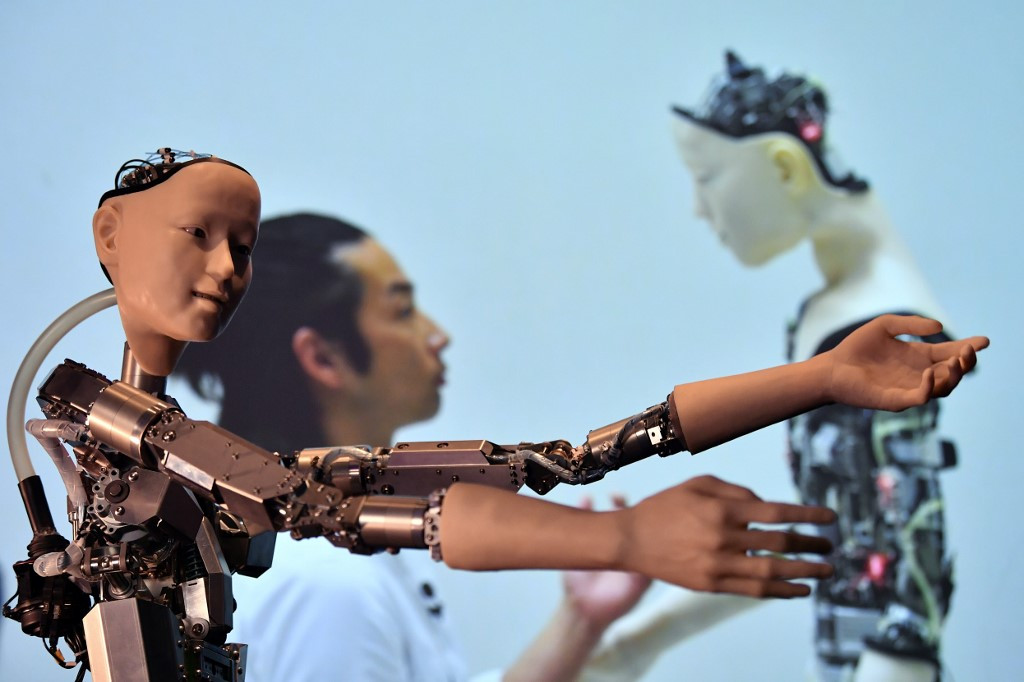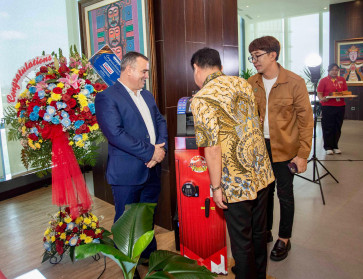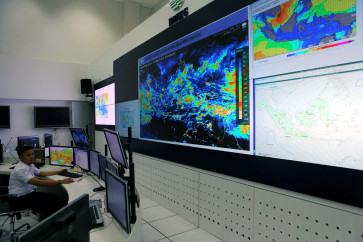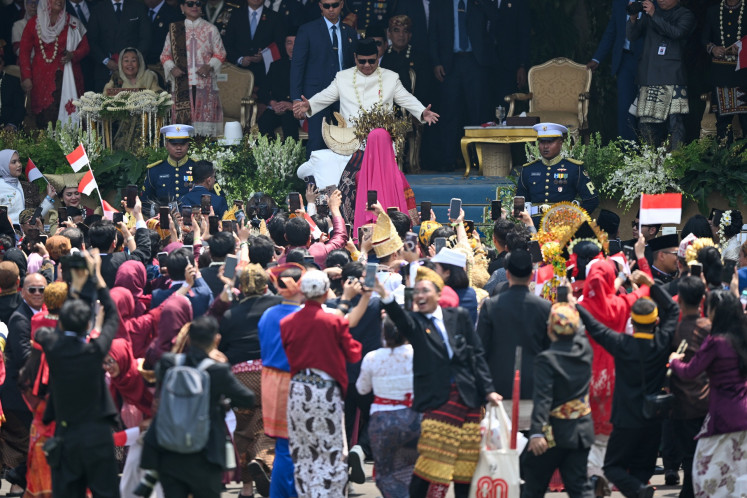Popular Reads
Top Results
Can't find what you're looking for?
View all search resultsPopular Reads
Top Results
Can't find what you're looking for?
View all search resultsCreative minds think they’ll always be a step ahead of AI
The release of ChatGPT, NVIDIA Canvas and DALL-E suggests that artificial intelligence (AI) will one day disrupt even creative industries, yet workers in the segment believe some space will always be reserved for humans, no matter how sophisticated software becomes.
Change text size
Gift Premium Articles
to Anyone
T
he release of ChatGPT, NVIDIA Canvas and DALL-E suggests that artificial intelligence (AI) will one day disrupt even creative industries, yet workers in the segment believe some space will always be reserved for humans, no matter how sophisticated software becomes.
Audinanto Alif, a freelance writer and bassist for Indonesian metal band Kultus, says AI may produce good, “authentic” creative products, yet they are mainly generic.
“The right analogy for this is mass-produced shoes as opposed to handmade ones. Both are authentic, but the handcrafted ones have special qualities,” Audinanto told The Jakarta Post on Friday.
With its apparent aptitude for creative endeavors like poetry or coding, ChatGPT has become a social media sensation.
However, Audinanto says AI that can generate marketing copy has been around for some time, allowing people to instantly produce written text on a specific theme.
Read also: AI does my homework! How ChatGPT pits teachers against tech-savvy students
Such copy, according to Audinanto, ticks the box of search engine optimization (SEO), meaning it is specifically crafted to be picked up by search engines so as to appear high up in the results list when internet users make queries.
Such copy may look generic and uniform compared with text written by a human, but that does not stop it from posing a threat to writers.
“Article generators will definitely reduce freelance writer jobs […], because a company would rather subscribe to these generators than hire freelance writers. It’s cheaper,” says Audinanto.
Yet, he feels AI only poses a threat to “generic writers” who do not hone their creativity regularly and that there will always be a place for a good writer.
A musician himself, Audinanto notes that AI is all over the place in the musical world as well, ready to generate from scratch finished songs with beats, melody and lyrics.
A case in point is virtual idol Hatsune Miku, developed by Japanese media company Crypton Future Media. Code-named CV01, Hatsune Miku was developed through an AI-based voice synthesizer software called Vocaloid.
“I personally prefer a human touch in music,” Audinanto says, adding that using AI tools too much in writing or music would “dull creative workers’ senses.”
Workplaces will adapt to the tech disruption, he believes. “Adapting is a human survival skill that has been hardwired within us for ages.”
Admitting that AI may take over several industries, he insisted it could not handle creative tasks requiring human emotions and perspective.
Taufik Nugroho, a product designer for Toto Appliances, which manufactures sanitary and kitchen products, has a gloomier take on the role of creative minds alongside AI.
“For me, it’s 50:50. Maybe there will be some safe fields for creative workers in the future […] but no one can predict anything when it comes to technological evolution,” Taufik told the Post on Friday.
In his line of work, AI had become frighteningly sophisticated, he said, citing as a case in point NVIDIA Canvas, a piece of AI software developed by US tech company Nvidia, which generates realistic landscape images in just a few strokes on the screen.
As good at image generation as AI may be, Taufik notes, it is still confined to 2D products. Since product designers mainly create 3D models, Taufik maintains a shred of hope.
“To my knowledge, AI is not yet that advanced in 3D modeling,” says Taufik, though not forgetting to give credit to a machine-learning feature in a 3D modeling software called Siemens NX.
The feature, called topology optimization, could generate efficient shapes unimaginable to the human mind, he said, and was a big help in his profession, since it could ease the process of material optimization or come up with shapes that were easier to produce.
“The generated images are really good, in combination with a user’s imagination and description,” he admitted.
However, he emphasized that AI-generated images might result in ethical concerns, given that input came from data banks, meaning AI used readily available images from the internet before creating anything.
“Computers are not God, who creates something out of thin air. They just play the role of humans who make use of the available resources,” he adds.
Kevin Setiawan, another product designer working for a Balinese furniture producer, said AI helped a lot with stimulating ideas, but when it came to execution, he would run conventional software.
“AI will not be that good when the user cannot give good prompts,” the 28-year-old said on Friday, using an industry term that refers to the start of the design process, such as a sketch, outline, pattern or plan.
Kevin cited the example of DALL-E, a deep learning AI technology developed by United States AI research laboratory OpenAI, which specializes in translating prompts into pictures.
Read also: Microsoft aims for AI-powered version of Bing
“I don’t believe AI can replace humans in the process of creating designs or works of art, because in both, we believe in the value of things. […] The process of creating value needs a more human touch,” Kevin said.
Tourism and Creative Economy Minister Sandiaga Uno told the Post on Friday that AI was nothing to be worried about and could not replicate the creativity, authenticity and emotional depth humans could bring to bear in their work.
“Generative AI, such as ChatGPT, is not designed to have preferences, tastes or personal feelings, so, in consequence, it will not yield anything that is coherent with the vision or style of the user,” Sandiaga said.
“[AI] can become a useful tool for creative workers, but it cannot be seen as a replacement for human creativity and imagination,” he concluded.










